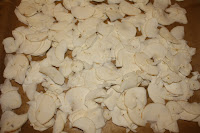I signed for a seminar on Public Interest Design in January, so I have some homework to do before then. It's being organized by Bryan Bell who edited the book Good Deeds, Good Design: Community Service through Architecture, and is the founder and executive director of Design Corps. He is also one of the forces behind SEED (Social Economic Environmental Design) certification for buildings. SEED is similar to LEED in it's evaluation of buildings, but it goes further and looks at the social and economic relevance of the project, as well as the environmental aspects.
On the reading list for the course is his book, Good Deeds, Good Design which is a collection of essays and case studies of projects that look at projects that serve the people who normally can't afford an architect. It's an inspiring book for architects that feel the profession is letting down society by only catering to the upper echelons of society. Also on the reading list by Bell is Expanding Architecture: Design as Activism which expands on his previous book and is a guide for architects who are interested in the same issues that SEED deals with.
Also on the list is Design Revolution: 100 Products That Empower People by Emily Pilloton who is the founder and Executive Director of Project H Design, a non-profit that provides humanitarian product design services. I haven't read it yet, but I'm curious to see how similar it is to Design for the Other 90% by Cynthia E. Smith, and whether or not the projects overlap.
Lastly on the list is The Power of Pro Bono edited by John Cary. Here, again, is a compilation of 40 community based projects divided into 6 different categories: Arts, Civic, Community, Health, Education, and Housing.
I am curious to see how these projects were funded, how involved the community is in the design, and whether or not the community is able to continue to fund the upkeep of the building after the design services go away.
On the reading list for the course is his book, Good Deeds, Good Design which is a collection of essays and case studies of projects that look at projects that serve the people who normally can't afford an architect. It's an inspiring book for architects that feel the profession is letting down society by only catering to the upper echelons of society. Also on the reading list by Bell is Expanding Architecture: Design as Activism which expands on his previous book and is a guide for architects who are interested in the same issues that SEED deals with.
Also on the list is Design Revolution: 100 Products That Empower People by Emily Pilloton who is the founder and Executive Director of Project H Design, a non-profit that provides humanitarian product design services. I haven't read it yet, but I'm curious to see how similar it is to Design for the Other 90% by Cynthia E. Smith, and whether or not the projects overlap.
Lastly on the list is The Power of Pro Bono edited by John Cary. Here, again, is a compilation of 40 community based projects divided into 6 different categories: Arts, Civic, Community, Health, Education, and Housing.
I am curious to see how these projects were funded, how involved the community is in the design, and whether or not the community is able to continue to fund the upkeep of the building after the design services go away.
























